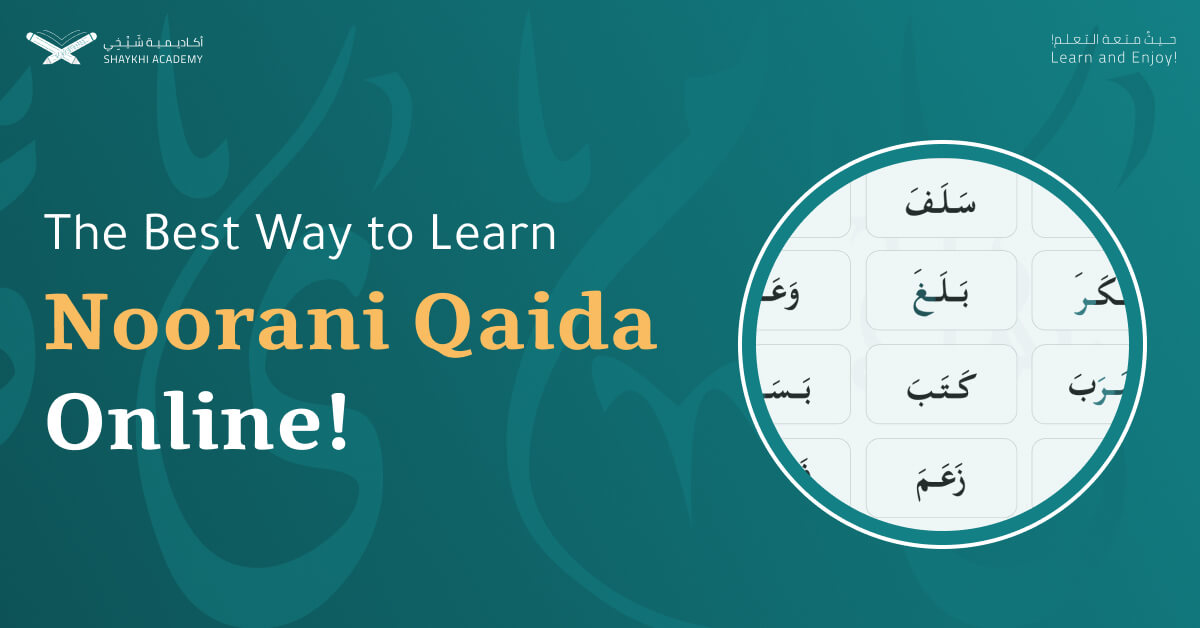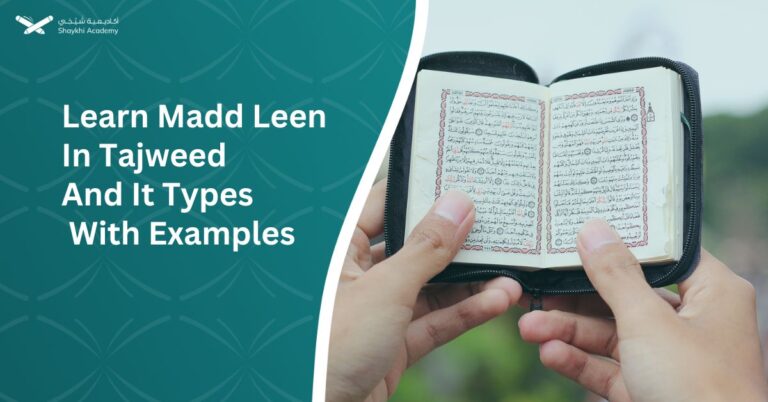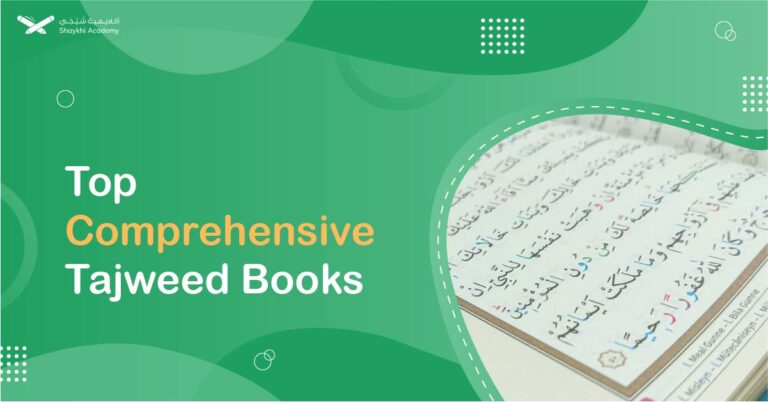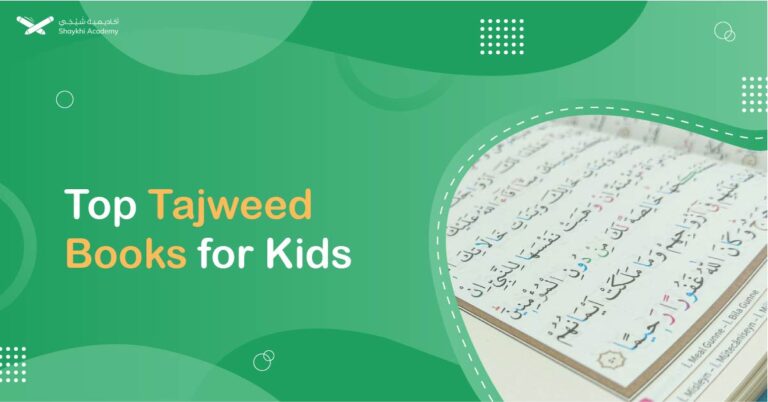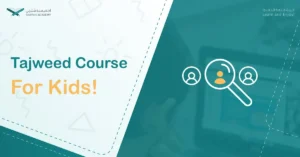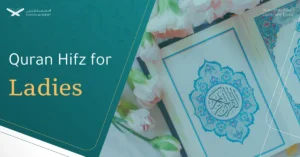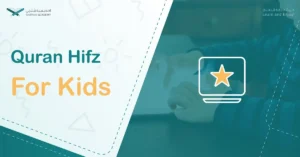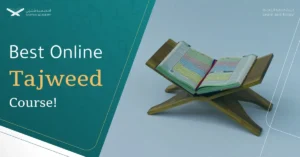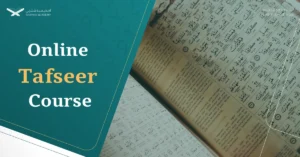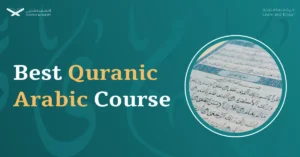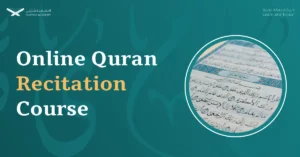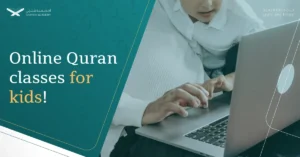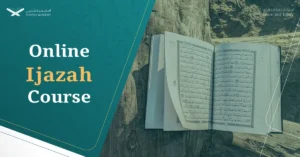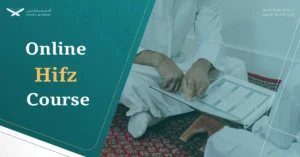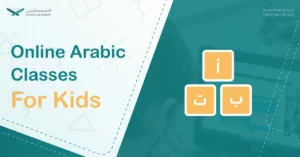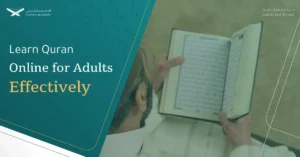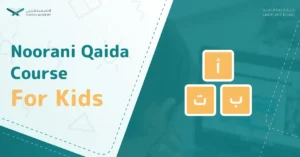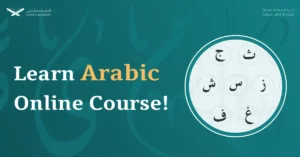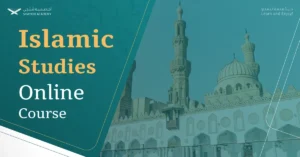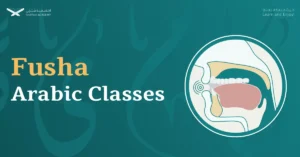Arabic Noorani Qaida is a method of teaching Arabic reading and writing that aims at facilitating learning the Quran. It is specifically beneficial for children and Non-Arab students who wish to learn the Arabic language, hence becoming able to read the Quranic script fluently.
In this article, we will summarize the lessons confined within the Arabic Noorani Qaida book and outline the best methods of learning the Noorani Qaida.
What is Noorani Qaida
Noorani Qaida is a fundamental method that aims at teaching children and beginners the basics of the Arabic language including the Arabic alphabet, compound letters, vowel and non-vowel letters, Mushaddad, short and long vowels, in addition to practical comprehensive exercises on each of these subjects.
The Noranic approach (Noraniah Qaida), is one of the Quran sciences that is used to teach Arabic, It is used to teach how to pronounce the Arabic language correctly, how to connect its letters correctly, and then how to connect Harakat to letters and learn the mouth positions of articulations and the places of emphasis and lexicology, by applying it linguistically in examples from verses of the Holy Quran.
Arabic Alphabet Noorani Qaida
The Noorani Qaida lessons start by presenting the letters of the Arabic Alphabet, the shape of each letter is written accompanied by its name, as shown in the figure below.
Origin of Noorani Qaida
Arabic Noorani Qaida is a teaching method that was named after Sheikh Nour Al-Haqqani, an Indian scholar, who devoted his efforts to helping children and non-native speakers read the Quranic Arabic and fluently pronounce the Arabic letters which serve their Islamic studies afterward.
Why Is It Called The Noorani Qaida? (Noranic approach)
The reason why it is called the Noranic approach( Noraniah Qaida) is a return to its author Sheikh Noor Mohammed Haqqani. There is another name for it, which is the name of the improved Nourani Fathi approach, and the reason why it received this upgraded name is a return to Sheikh Osama Qarri Al-Matanni, where he worked on improving it and upgrading it, and updating it to become more evolving and advanced than it had been in the past.
Importance of Arabic Noorani Qaida
Noorani Qaida is a stepwise approach that helps children and beginners to level up their Arabic language skills.
By mastering the Arabic language children become more connected to the Islamic faith and become able to easily understand other Islamic subjects.
Enriching the language skills of children at an early age enhances their cognitive skills and improves their overall academic achievement as well.
Why Should I Learn Noorani Qaida?
If you want to know how important learning Noorani Qaida is, the following examples will clarify the matter:-
First Example
Arabic the word for ‘eat‘ is ‘Kul’ / ‘كُل’
And the word ‘Kul’ starts with the letter ‘kaf’ / كَ
Meanwhile the word used for ‘to say‘ is ‘Qul’/ ‘قُل’
The word ‘Qul’ starts with the letter ‘Kaf’/ قُ
Second Example
In Arabic the word used for Dog is ‘Kalb’/ ‘كَلْبٌ’
The word ‘Kalb’ starts with the letter ‘ك
The word used for heart in Arabic is ‘Qalb’/ ‘قَلْبٌ’
The word ‘Qalb’ starts with the letter ‘Qaf’/ قُ
So as you see, Just one Arabic letter pronounced wrongly can change the meaning of the word or the sentence totally. If someone while reciting Quran, reads the word ‘Qalb’ as ‘Kalb’, he has spoken the word ‘Dog’!
Accordingly, learning Noorani Qaida( Noranic approach) is considered a must for those who seek to learn, read, recite and memorize the Holy Quran. Noorani Qaida is simply a learning way to learn the Arabic language. It starts with the basic alphabetical order of the Arabic language.
Learners, whether they are young children or intermediate levels, or even elders, start learning by recognizing the Arabic letters, the Arabic alphabet consists of twenty-eight letters, they are the basic letters of the Arabic language but there are also the letters signs which are called (Harakat) such as fatha, damh, kasra and skoon, in addition to some other signs which is associated more with reciting the Holy Quran rather the Arabic language itself.
Instructors start their work by teaching the learners the Arabic letters individually, letter by letter, until they finish explaining the twenty eight letters of the Arabic language alphabet. They teach all the aspects related to the letter ,how to pronounce it, the articulation position of the letter sound, from where it is articulated, which part of the mouth it is pronounced from, how it is pronounced when it comes before or after certain letters, how it is pronounced if it comes in the beginning of a word, or in the middle of a word, or when it comes at the end of the word, and so on.
Then the instructor teaches the learners the compound forms of the different letters’ sounds. They learn how to articulate the proper sounds of each letter. They also learn how much the letter should be pronounced with short or long-voiced sound with ‘ A” sound or” E” sound or” O,” which are called articulations signs,( Harakat). They also will learn the different rules of some Arabic letters such as al- noon al- sakinh, al-meem al- sakinh, and when someone should pause his breath during reading for a while ( al- waqf). After finishing the course of learning Noorani Qaida learners get capable of reading and reciting the Holy Quran in proper pronunciation.
Goals of Teaching Noorani Qaida
Teaching Noorani Qaida to children lays a strong foundation for mastering Arabic phonetics and reading skills. This in turn enhances children’s Arabic language and promotes their further Quranic and Islamic studies.
Noorani Qaida also focuses on the proper pronunciation of Arabic letters which is essential for students to confidently communicate in Arabic.
Arabic Noorani Qaida Lessons
The Noorani Qaida book consists of seventeen lessons, ordered in a stepwise manner to introduce the Arabic letters to students, teach students how to pronounce the Arabic letters accompanied by different diacritic marks, and then enable them to link the Arabic letters forming words.
Below is a summary of the contents of the Arabic Noorani Qaida book.
| Arabic Noorani Qaida Lessons | Content |
| Lesson 1 | Separate Arabic letters |
| Lesson 2 | Compound letters (Al-huruf Al-Murakaba) |
| Lesson 3 | Abbreviated Letters (Al-huruf Al-Muqatha’ah) |
| Lesson 4 | Vowel letters, short vowels (Al-Huruf Al-Mutahareka) |
| Lesson 5 | Nunated letters (Al-huruf AlMunawana) |
| Lesson 6 | Revision on vowel letters (Harakat) and Nunation (Tanween) |
| Lesson 7 | Small Alif, Yaa’, and Waw |
| Lesson 8 | Long vowels and incomplete vowels (Madd and Leen letters) |
| Lesson 9 | Revision on Nunation, long vowels, and incomplete vowels. |
| Lesson 10 | Non vowel letters (Al-sukun) |
| Lesson 11 | Revision on non-vowel letters |
| Lesson 12 | Shaddah |
| Lesson 13 | Revision on Shaddah |
| Lesson 14 | Revision on Shaddah and Sukun |
| Lesson 15 | Revision on two Mushaddad letters in one word |
| Lesson 16 | Revision on Shaddah and Sukun with Madd (lengthening/ elongation) |
| Lesson 17 | General Revision |
Methods of Teaching The Noorani Qaida to Children
Lesson One (The letters)
The teacher teaches the children the individual letters of the alphabet, reads them to the students, and then repeats them with a uniform system with rhythmic motions until they are inculcated in the minds of the students. The individual letters, such as A, B, T, and so on
Lesson Two (The compound letters)
The teacher teaches children compound letters, and tries to teach them to pronounce them correctly, compound letters, for example, ba, la, etc.
Lesson Three (The cut-out letters)
The teacher then trains the children to use the cut-out letters, and teaches them these letters clearly, so that they do not pronounce them as words and those cut-out letters are like, Yaseen, Alaf laam meem, Alf laam raa, and so on.
Lesson Four (The vowels)
The teacher starts teaching children vowels (moving sounds), giving them examples, which are the letters that are formed by the Arabic Harakat of articulations( Al- fatha, Al- Kasrh, Al- damh). The e, such as La, Le, Lo, and so on.
Lesson Five (Al-monawana letters)
Then the teacher comes to teach the students Al- monawana letters, in which they contain the sound of the letter N or the sound of ing “like, Tann, Tenn,Tonn and so on.
Lesson Six (Harakat)
The teacher trains students how to pronounce Arabic Articulations signs ( Harakat) and the rules of Tanween ( articulating some letters by adding the sound of N to the end of each letter), Teacher does that by giving the learners examples, such as the Arabic word (Ahd) which is pronounced as ‘Ahdan’… And many other words like this example.
Lesson Seven (The little letters)
The teacher trains the learners, on the little letter of Al- alf, the little wow letter, and also the little letter of Al- Yaa, by giving them examples, such as Sha, Sa or fa sounds, and so on.
Lesson Eight (Long voiced and soft letters)
Children learn long voiced letters and soft letters like Baa, Saa, Shee, and so on. Teacher gives them examples of verses from the Holy Quran.
Lesson Nine (A combination of the lessons)
Children practice the three types of long-voiced vowels, Tanween, and also the soft articulated letters. The teacher provides them with many examples of Quranic verses from the Holy Quran.
Lesson Ten (Sukoon)
A teacher trains children to (el sukoon harkat), and gives them examples of verses from the Holy Quran.
How to Teach Noorani Qaida?
Noorani Qaida teaching methods are numerous. They all depend on providing students with the basic information in a way that is clear, fun and entertaining at the same time. These are some tips that make Noorani Qaida learning a pleasant and fruitful experience for kids.
One rule at a time
For effective Noorani Qaida learning, the teacher should present one rule at a time to ensure that students master the topic before moving to the next lesson.
Repetition
When teaching any subject to children, repetition is key. By revising previously covered topics, we ensure that children gain a deeper understanding of the subject.
Practical exercises
Practice makes perfect! When students get used to applying the Arabic rules and the Noorani Qaida with tajweed rules they already studied, they become more confident with their Arabic reading skills.
Engaging activities
Engaging students in fun activities such as coloring, puzzle solving, and storytelling enhances their understanding and makes learning more entertaining.
Regular assessments
Holding regular examinations for students ensures the success of the learning process and defines weak points that require further effort by the teacher and the student.
Use technology
Technology has made Noorani Qaida teaching much easier than ever before. With the help of interactive programs, Multimedia resources, and online Noorani Qaida teaching platforms, students can easily master the Quranic Arabic.
Advantages And Benefits of Learning to Read with A Nourani Qaida
Learning Noorani Qaida is beneficial for all learners, whether they are native Arabic speakers or they are non-native Arabic language speakers, but it is more advantageous and easier for those who are not native Arabs, especially if they are still at the beginning level of learning how to pronounce the alphabet and read some of the common Arabic words correctly. And If they want to learn how to recite the Holy Quran with the proper rules of Tajweed, it is recommended for them to learn it. Here are some of the benefits and advantages of learning the Noorani Qaida:-
Spelling it Correctly And Efficiently
A person who learns this way can read the Quran by spelling it correctly and efficiently, regardless of how old they are, unlike those who do not learn this way and who find it difficult to do so, especially when they are young, and anyone who learns by the Noorani rule can end memorizing the Holy Quran in less than six months.
Narrated Abu Hurairah: that the Messenger of Allah (peace and blessings are upon him) said: “Whoever takes a path upon which to obtain knowledge, Allah makes the path to Paradise easy for him.” Jami Al- Tirmidhi 2646.
Being The Easiest Way
This approach is the easiest way to teach the reading of the Holy Quran, and also to memorize it, for both beginners and novice, effortlessly and in a short time This method enables the learner to pronounce the letters correctly, and also makes them give each letter its rightful place of articulation.
Mastering Tajweed Rules
It teaches the person learning Tajweed rules how to apply these rules during reading the Holy Quran or reciting it.
Awareness
It helps raise awareness and develop the recognition of the person learning it and make them more understanding, even at an early age.
Improves Your Pronunciation
This method helps to pronounce the Arabic alphabets in an exemplary manner. It makes the articulations of the Arabic letters perfect. It teaches them better than other methods, and it corrects the tongue and improves its functions.
Helps Kids to Read
This method helps kids to get attached to reading in general, especially reading the Holy Quran.
Set Your Mind with A Righteous Intention
Before starting anything you have to set your mind with a righteous intention just for the sake of Allah, not for the sake of anything else.
It is narrated on the authority of Amir al-Mu’minin (Leader of the Believers), Abu Hafs ‘Umar bin al-Khattab (may Allah be pleased with him), who said: I heard the Messenger of Allah (peace be upon him), say:
“Actions are according to intentions, and everyone will get what was intended. Whoever migrates with an intention for Allah and His messenger, the migration will be for the sake of Allah and his Messenger. And whoever migrates for worldly gain or to marry a woman, then his migration will be for the sake of whatever he migrated for.” Related by Bukhari and Muslim. First and foremost, I pray to Allah to make you one of His righteous slaves, one of those who have righteous intentions for Islam and Muslims, one of those who are good role models for Muslims and one of those who seek guidance and knowledge to benefit themselves and benefit others by learning His sacred sciences.
Abu Musa reported: The Prophet, peace and blessings be upon him, said:
“Verily, the parable of the guidance and knowledge that Allah Almighty sent with me is the likeness of rain falling upon the earth. Among them is a good group which receives the water and thus there is abundant growth of herbage and grass. Among them is a barren land which retains the water and thus Allah benefits people from it; they drink from it and graze their animals. And it falls upon another group which is only abysmal; it does not retain water, nor does herbage grow. Such is the parable of one who understands the religion of Allah and benefits from what Allah sent with me; he learns and he teaches. Such is the parable of one who does not raise his head and does not accept the guidance Allah sent with me.” Ṣaḥīḥ al-Bukhārī 79
Go to Masjid/Online Quran Academy
There are many familiar ways to learn Noorani Qaida. If you are living near a mosque or Islamic organization, you can go there and ask if there is attached Madrassa for teaching Noorani Qaida, then you can attend a class of teaching Noorani Qaida.
But, if you are living abroad in non Muslim country and far away from the mosque and there aren’t any schools available for teaching Noorani Qaida, the solution is to join an online educational institute for teaching the sciences of the Holy Quran and Islamic studies. This way of learning is also getting popular nowadays. You can learn the content of the whole course of Noorani Qaida with an online tutor while you are staying at your home.
Why Learn Noorani Qaida Online with Shaykhi?
Shaykhi Academy is one of the best online academies that offer Arabic Noorani Qaida courses. Here is what makes our Noorani Qaida course so special.
Native Tutors
At Shaykhi Academy, we rely on Arab native tutors who are graduates of Al-Azhar University, one of the largest Islamic universities worldwide. Learning from a native tutor enables you to grasp the correct pronunciation of the Arabic letters and ensures that you achieve the best language learning outcomes possible.
Male and female teachers
Our vision is to provide an opportunity for each student to learn the Arabic language. Therefore, we offer Noorani Qaida classes for all members of the family. With a Large number of male and female tutors that help you and your family master the language from the comfort of your home.
Flexible schedules
We respect your time! At Shaykhi we understand the need for customized study plans and therefore we present multiple plans that suit our students wherever they are.
Customized curricula
We believe that every student is unique! Hence, we ensure that our Noorani Qaida courses meet the different needs of students with varied learning styles and abilities.
Al-Menhaj – Quranic Arabic Books.
One of the best books for teaching Tajweed and Arabic reading in a straightforward and understandable manner that enables you to advance at whatever level you’re at, from a novice to an expert, is the Shaykhi Academy series of books :
• Al-Menhaj – Arabic Reading Book – Part 1 (Beginners).
• Al-Menhaj – Arabic Reading Book – Part 2 (Intermediate learners).
• Al-Menhaj – Arabic Reading Book – Part 3 (Advanced learners).
The method of our books is based on gradual education in order that the students do not feel difficult or suffering, we also choose highly qualified teachers so that they can teach you correctly, our teachers are mainly concerned with improving your pronunciation of words and make sure that your Place of articulation is correct.
Also, in addition to teaching you Tajweed, our teachers explain some of the rules of the Arabic language that you may encounter while learning the Holy Quran.They also use some Quranic Arabic books in order to clarify all the points that you may have difficulty understanding.
Unlock the Path to Quranic Mastery with Shaykhi Academy!
Are you seeking the finest Quranic education right from the comfort of your home? Look no further! Shaykhi Academy stands out as a premier online Quran learning platform, dedicated to providing exemplary education to both children and adults.
Why Choose Shaykhi Academy?
- Connect with highly qualified native tutors.
- Flexible scheduling to suit your busy lifestyle.
- Affordable classes tailored for all levels.
- Accessible from anywhere around the globe.
Discover Our Range of Courses:
- Arabic Noorani Qaida: Lay a solid foundation for Quranic studies.
- Online Quran Classes for Kids: Engaging lessons for lifelong learning.
- Tajweed Rules for Kids: Learn to recite with confidence.
- Quran Hifz for Kids: Step-by-step guidance to memorize the Quran.
- Quran for Adults: Introduce yourself to Quran reading and Tajweed rules.
- Online Arabic Courses: Master the language of the Quran.
- Islamic Studies: A wide range of topics related to Islam, including theology, law, Quranic studies, Hadith.
Don’t Miss Out on Your Chance to Excel!
Whether you’re a beginner or seeking advanced knowledge, Shaykhi Academy can guide you! Book your free trial now and make Ramadan 2024 your Quranic turning point!
Conclusion
Noorani Qaida is an efficient Arabic language teaching method that was initially founded by the Muslim scholar Noor Al-Haqqany. It aims at laying a strong foundation for young learners and beginners to learn Quranic Arabic and hence enables them to learn the Holy Quran and other Islamic subjects later on.
The Noorani Qaida booklet consists of 17 lessons covering the most important topics that students need in order to fluently read Arabic texts. These topics include the Arabic alphabet, compound letters, vowel and non-vowel letters, Mashaddad letters, Tanween, long vowels and incomplete vowels, In addition to comprehensive exercises on each topic.
To ensure that students successfully acquire the required skills, teachers should introduce the Noorani Qaida rules in a way that is fun and engaging. They should also continually assess the learning outcomes and encourage students to put the rules they have studied into practice.
Thanks to modern technology, learning Arabic Noorani Qaida with the guidance of native Arab teachers has become easier than ever before. Additionally, Online Noorani Qaida courses are now considered an affordable and convenient method that helps parents enroll their children in Noorani Qaida classes without the need to search for a nearby Arabic teaching center.
